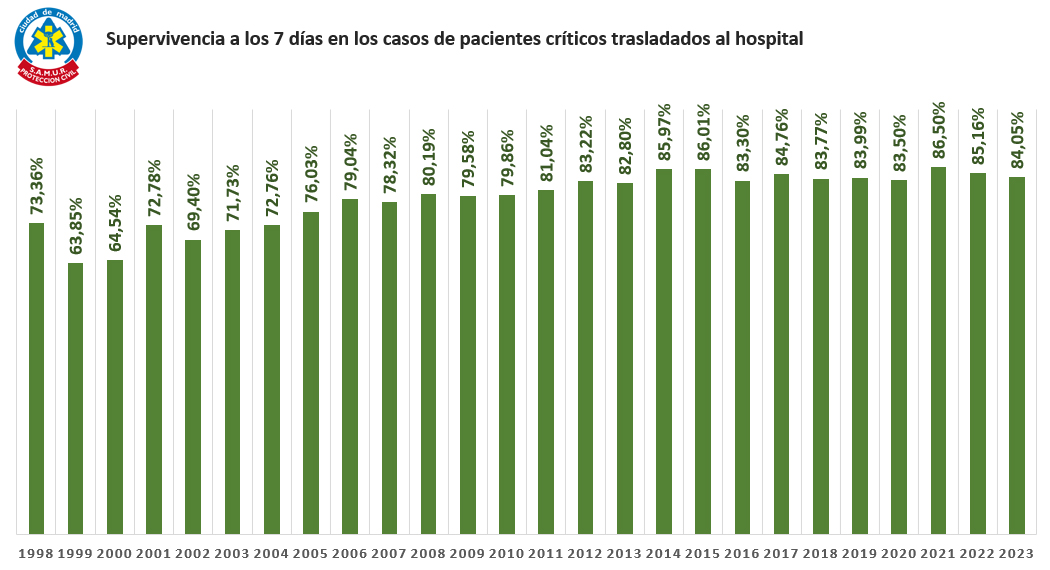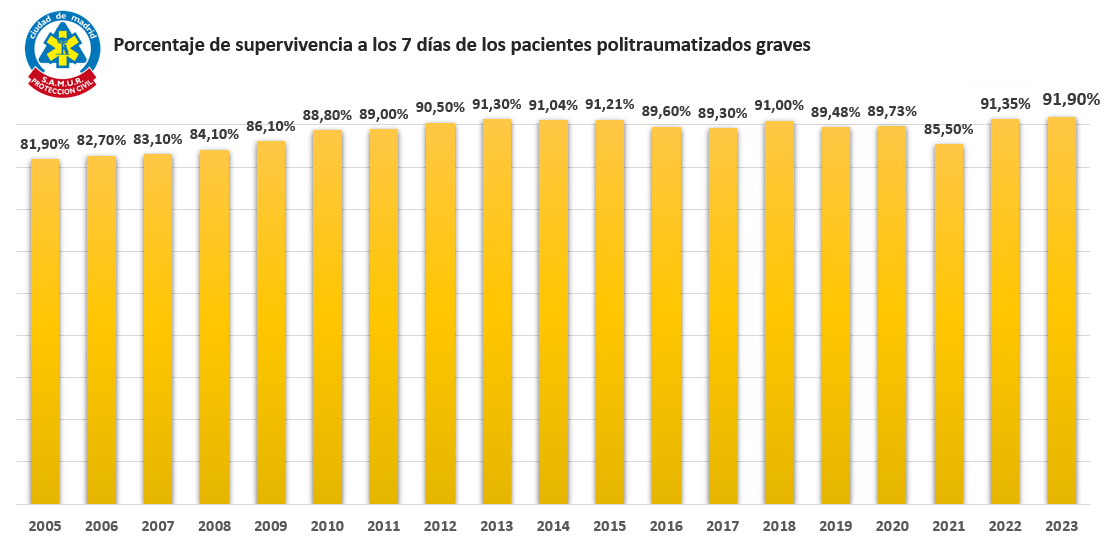Emergency medical assistance

The main objective to be fulfilled in all emergency systems is bringing, as soon as possible, life support units, either basic or advanced (BLS or ALS), to places where incidents have occurred and, once there, provide quality medical care.
To achieve these objectives, SAMUR-Civil Protection takes the following actions: a strict policy of having always enough emergency medical teams on duty , the homogeneous distribution of units in the operational stations, the progressive increase of the medical staff and operational stations all over the city and the implementation of procedures and technological measures to reach these goals.
Interventions
During 2017, the units of SAMUR - Civil Protection were demanded, by individuals and institutions, for 116,789 events related to extrahospital emergencies occurred on public and local roads in Madrid (137,033 attentions).
Response time
The response time is the time that elapses since the assistance unit is activated until it reaches the place of occurrence.
In 2017 a global response time of 8 minutes and 34 seconds was achieved (8 minutes and 39 seconds for the Advanced Life Support Units and 8 minutes and 31 seconds for the Basic Life Support Units).
Strategic assistance indicators
Survival in critically ill patients transferred to hospital 7 days after admission
It is the oldest indicator of the service, the first data come from the year 1998. In 2017, the best survival rate has been achieved, 84.76% of patients transferred at notice (excluding codes 16 and 15.1) survived after 7 days.
Survival at 7 days of traumatic patients
An indicator implemented in 2005, of important interest for the service given the high percentage of patients of this pathology assisted in SAMUR. During the year 2017, the survival rate at 7 days was 89.38%, on the same data line as the previous year.
Survival without neurological deterioration of cardiac arrests not witnessed
Without a doubt, it is the most specific indicator of an emergency service. In SAMUR, it is an extremely demanding indicator, since it excludes cardiac arrest that occurs in the course of our performance, and on the other hand, it includes traumatic cardiac arrest, something that is usually excluded in these statistics.
The data for 2017 is the best in the history of the service, 24.43% of the patients were discharged with good neurological status (CPC I-II).
The implementation of special codes, in collaboration with hospitals, added to a high demand for quality of care are the key to achieving these survival rates.
Complaints
Throughout the year 2017, 54 complaints were received, a rate of 0.39 per 1000 attentions.





